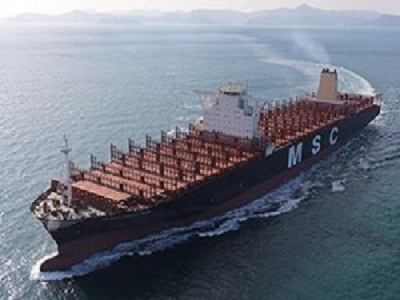
Posted on November 14, 2017
Last month, global management firm McKinsey released a report analysing the future of the container shipping industry. Inspired by the changes in the global sector following containerisation in 1967, McKinsey began reimagining the industry 50 years from now and what role the rapid advancement of technology would play in the coming decades. One key point of interest was the suggestion that the size of vessels sailing the global trade lanes could reach 50,000 TEU, a thought interesting enough to require further analysis from Tom Bebbington of industry consultancy, Container Logic, in a truly fascinating read covering various aspects and issues such a size could have on the container freight industry.
With vessels exceeding 22,000 TEU currently in rotation at ports around the world, and rumours of Mediterranean Shipping Company (MSC) putting in an order for 23,000+ TEU vessels, is it so impossible to think 50,000 TEU vessel could come into play? No, reckons Bebbington’s analysis and in fact could arrive much sooner than 2067. McKinsey in its report suggests that ‘autonomous 50,000 TEU ships will plough the seas – perhaps alongside modular drone-like floating containers’ further suggesting that the volume of container trade would be two to five times what it is today.
The McKinsey report identified three main constraints when imagining these ultra large vessels (given that the 22,000 TEU ships are currently referred to as ULCV’s or ultra large container vessels, a new descriptor should probably be used). In its analysis, McKinsey highlighted:
“Returns to scale decline with increasing size, so a move from 20,000 to 40,000 TEUs wouldn’t reduce unit costs as much as a move from 10,000 to 20,000 TEUs. Secondly, the narrowness and shallowness of some of the world’s waterways impose physical constraints: for example, the Strait of Malacca has a minimum depth of 25 metres, the most modern channels of the Suez Canal a depth of 24 metres. The latest designs for vessels that carry 24,000 TEUs have a depth of 16 metres, which leaves scope for further growth in capacity.
“Thirdly, over the past decade, the blitz for bigger vessels has strained terminal and port operators, forcing them to invest in new cranes, dredging equipment, reinforced quay walls, and extended berths. Unloading containers from bigger ships takes longer because cranes must reach farther across vessels, thus extending berth occupancy and reducing productivity. Nonetheless, this problem can be seen not as a limiting factor but as an opportunity for further innovation.”
Now whether these portents of a future world will ever come to pass is another thing. As we have pointed out many times in the past, economies of scale with regard to shipping only work when vessels are full or nearly so, when supply exceeds demand, as it has recently, this leads to cost cutting measures. We have seen slow steaming become a norm for the giant container ships and, not so long ago, remote harbours were choked with laid up vessels awaiting a return to service as trade revived.
Giant ships start to bring in thoughts of the monopolies so detested by the international regulators which have looked sideways at some of the ‘vessel sharing’ agreements which they closely monitor, or indeed on occasion, refuse to validate. Only time will tell which, if any, of the analysts’ predictions come to pass, what is certain however is that, as technology evolves, the shipping industry will develop as required by world demands.
Source: Handy Shipping Guide





